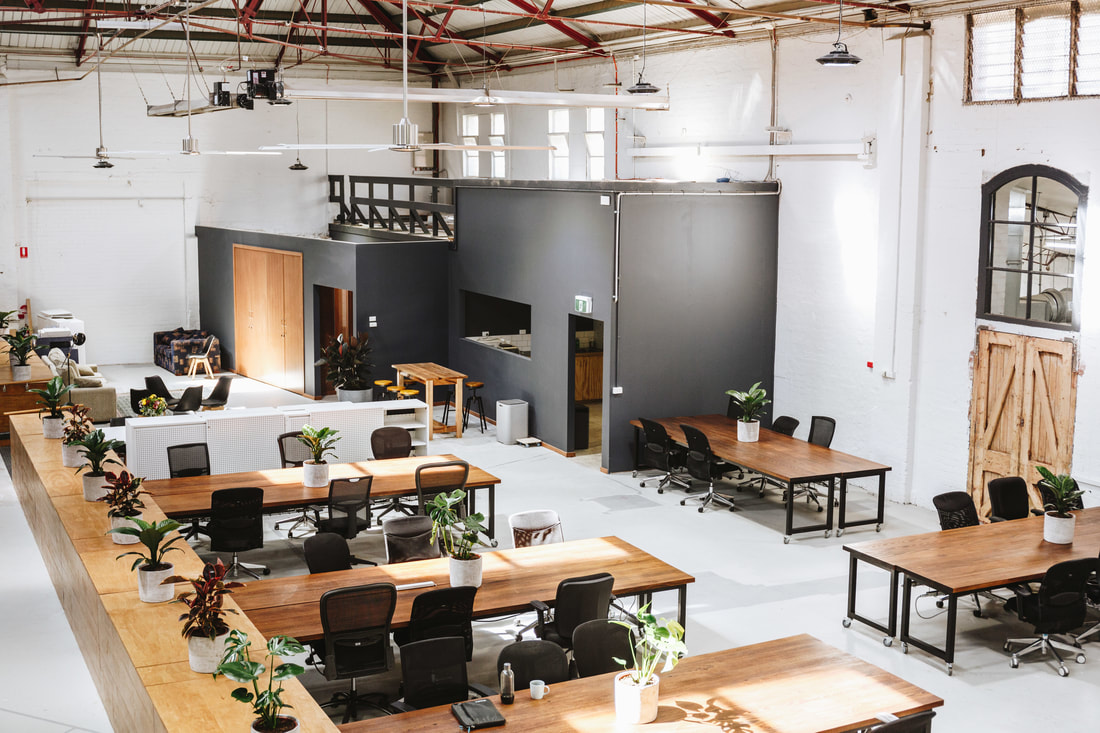|
The degree to which the social environment plays a role in our activity and motivation has been explored in countless studies. Organisations’ endless pursuit of greater collaboration has led to knocking down walls and removing spatial boundaries to allow for greater contact and interaction. It is widely believed that without such boundaries there will be room for increased collaboration, communication and overall support among staff. Many organisations have opted for open plan workplaces hoping that productivity will increase through shared access to materials and more quick and frequent interaction on connected tasks. The fans of open plan will staunchly defend the role of an open environment in building social support and a sense of community. But does an open workspace really improve collaboration? At BRM Projects we think it can. But, like everything else, there is a fine balance that needs to be achieved and with the proper layout, businesses can be just as productive, healthy and collaborative, as with a traditional office. When Offices are TOO open A new study conducted by The Royal Society in July 2018, titled ‘The impact of the ‘open’ workspace on human collaboration’ has found that employees have 73% less face to face interaction in an open office, while there was 67% more email and messaging use. The findings are built on previous research focusing on the impact of open plan on employees’ concentration. The study makes a correlation between collaboration and concentration, highlighting the point at which so many open workspaces go wrong. While co-working spaces like WeWork have an open office environment as the foundation of their success, many offices, in their drive to promote collaboration, actually end up doing the opposite, by removing the very parts of an office that help employees work more effectively. The need to concentrate and focus on individual work is becoming increasingly important in business today. To achieve this, a number of cognitive processes are required from the worker. When disrupted, these processes can lead to mistakes and impact on the efficiency of the work. The entire performance of the team is therefore compromised. Aside from workers’ performance, the impact of an open workplace on interaction is also explored. The study asserts that the open workplace movement has resulted in “an open expanse of proximal employees choosing to isolate themselves as best they can (e.g. by wearing large headphones…while appearing to be as busy as possible (since everyone can see them).” Humans have a fundamental desire for privacy. This study, along with a plethora of other research, proves that without this privacy, the urge to interact decreases, leading to indifference toward one another. The increase in electronic communication shows that employees were choosing other ways to communicate in order to preserve their privacy. The importance of spatial boundaries is further highlighted by the study when it states that they “have long served a functional role at multiple levels of analysis, helping people make sense of their environment by modularizing it … clarifying who is watching and who is not, who has information and who does not, who belongs and who does not, who controls what and who does not, to whom one answers and to whom one does not. “ While the intention in breaking down these boundaries is to encourage collaboration and efficiency, the impact on human interaction seems to be more harmful than good. How To Get It Right The Royal Society study’s findings may apply to cases of extreme open workplaces. By extreme, we mean workplaces that simply took the word ‘Open’ too far and abolished all options of privacy. But these findings don’t work for all open workplaces. In our experiences designing all kinds of workplaces from co-working spaces to accountancy firms, the BRM team have managed to achieve the balance needed for a successful open working environment. We’ve achieved this through incorporating the following: Agile Working – this flexibility granted to workers allows them to choose when, where and how they work, empowering them and also promoting greater productivity and concentration. Workers will use different spaces as needed instead of being assigned to a specific desk for the entire time. We’ve seen that agility in the workplace leads to greater collaboration and efficiency because workers create their own spaces to feel comfortable in.
Agility in the workplace can also be more cost effective as less space is taken up by permanent desks and the space that is available can be optimised and accommodate more people. Designated Areas – large communal areas that are assigned to collaborative tasks can motivate workers to get into “collaborative mode”, as these areas serve a clearly defined purpose, much like a spatial boundary helps people “make sense of their environment”. Moreover, designated “quiet” areas can be created to use when the hustle and bustle of an open environment becomes too distracting. Moving between collaborative areas and quiet areas allows the worker to create his/her own boundaries so they can be as productive as possible, given the specific task they need to carry out. Rather than having only open or only closed areas, they are faced with options. It’s clear that an entirely open plan workplace does not work. But we’ve come a long way in the evolution of the workplace and more and more businesses are realising that there is in fact a middle ground. While studies such as the one above certainly present interesting findings, this doesn’t mean that there is no future for the open workplace.
0 Comments
Your comment will be posted after it is approved.
Leave a Reply. |
Sign Up To Our NewsletterArchives
September 2023
Categories
All
|
BRM |
QUICK LINKS
|

 RSS Feed
RSS Feed

